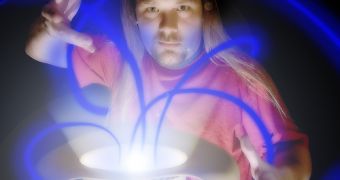Autistic people have difficulties in interpreting social cues, so Gustav Kuhn of Brunel University along with Anastasia Kourkoulou and Susan R. Leekam of Cardiff University, UK, thought that in order to better understand their functioning, they could use magic tricks.
A good magician is one who moves so fast that people don't realize the trick, and misdirection is always a part of the act.
In the vanishing ball trick, a magician pretends to throw a ball in the air but actually hides it in his hand, and the researchers thought that this could be a good experiment, that would prove what they suspected – that autistic people will be harder to fool.
15 teenagers and young adults with autism spectrum disorder and 16 without autism, watched a video of a magician performing the vanishing-ball illusion, as part of the experiment.
In the video, the magician throws a ball in the air a few times, and on the last throw, he pretends to throw it by making a tossing motion and looking upwards, while the ball actually stays in his hand.
Most observers claim to "see" the ball leaving the hand, and this is misdirection that is triggered by social cues, as the audience watches the magician's face instead of the ball.
At the end of the video, study participants were asked to mark where they last saw the ball, on a still image of the magician.
Many people will mark a high position and say that he threw the ball, even if the last place the ball appeared was in the magician's hand.
And as said before, people with autism should be using social cues less than others, so the researchers expected them to watch the ball rather than the magician's face, and not be fooled by the trick.
What they found amazed them as the exact opposite happened: autistic people were more likely to think the magician had thrown the ball.
Kuhn explained this unexpected discovery by saying that the participants to the study were students at a special college for autism, and they might have been taught to use social cues.
He added that he would like to repeat the experiment in children with autism, who are not yet educated in social cues, and see if the result is the same.
When Kuhn looked at the faces of the study participants, he noticed that they first looked at the face of the magician, just like normal people did, except that it took their eyes longer to fix there, and they also had more trouble fixing the ball.
“What we suggest is that individuals with autism have particular problems in allocating attention to the right place at the right time,” concluded Kuhn.
The results of the study are published in Psychological Science, a journal of the Association for Psychological Science.
Gustav Kuhn describes his study, “How Magic Changes Our Expectations About Autism” in this SciVee PubCast:

 14 DAY TRIAL //
14 DAY TRIAL //